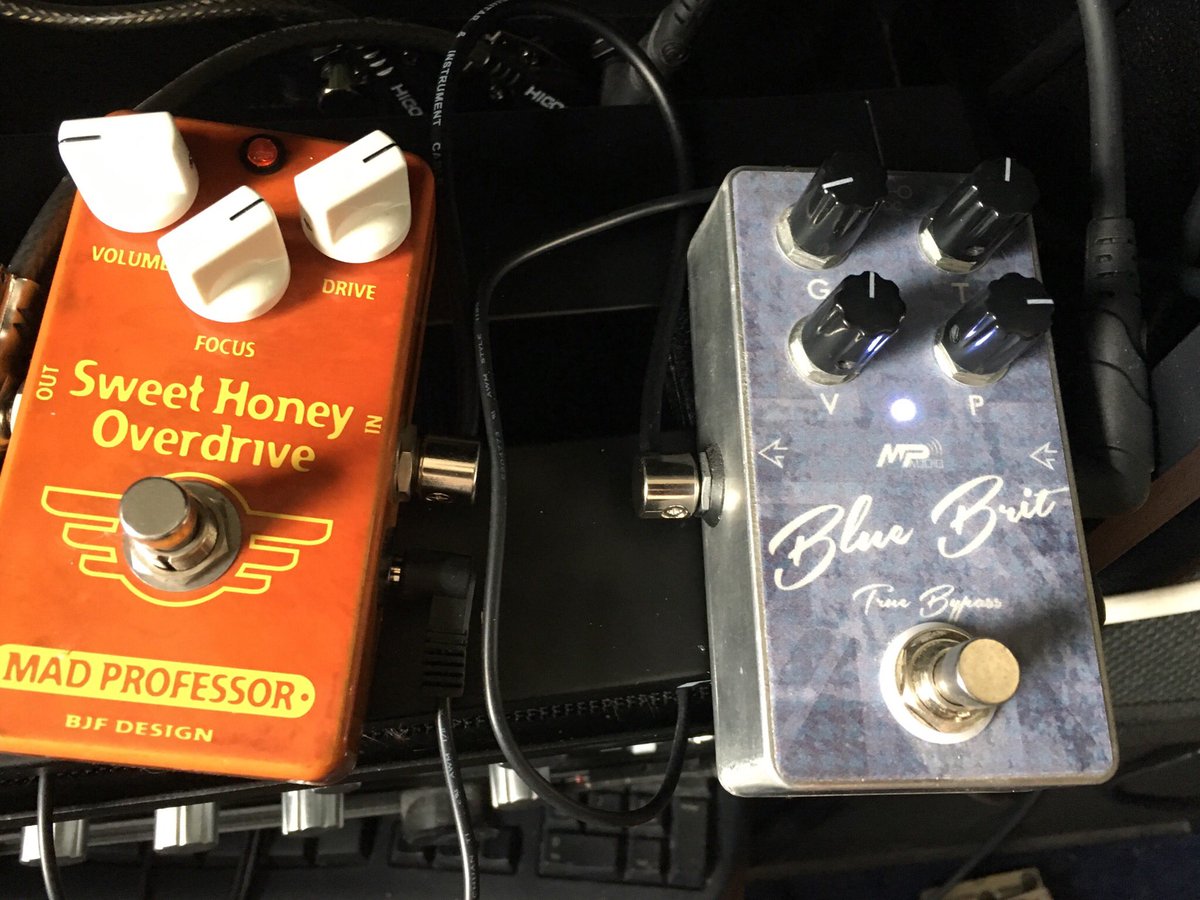This conversation was originally posted to my Twitter feed.
For this week’s #CoffeeAndKlon I want to talk about what got me into Klons and Klones in the first place. Because I don’t have a klone on my practice rig atm.
This week, I’ve gone back to the two pedals that give me *my* sound: the Blue Brit into the Sweet Honey Overdrive. For me, this is home.

What do I mean by ‘my sound’? There’s just something about it that, when my friends hear it, they say it’s the sound they imagine me using. I hope that makes sense?
It’s an almost-fuzz, into something that maybe sounds like a small vintage American amp, into something that’s pretending Marshall’s history started one amp earlier, into a speaker mostly used for AC30s.
And that’s the point of this week’s musings.
If you go straight into a plexi amp, you’re going to sound like everyone who’s ever gone straight into a plexi. It’s an awesome sound. It’s also one that everyone’s heard many, many times.
Same goes if you’re using a single drive pedal into a clean amp. There’s not much variety in any one pedal. Most of their controls are about dialling in the pedal for the guitar and amp.
When you start stacking pedals together, that’s where you can get different tones. How much of a difference depends a lot on which pedals you pair up.
Some pedals won’t stack at all, for various reasons. I’ll try and remember to cover those another time. Are they bad pedals? No. You’ve just got to embrace them for the tone they give.
Some pedals are engineered to ensure they stack well. That’s one reason why I’m a huge fan of Mad Professor pedals, the Bearfoot FX pedals – basically anything designed by BJFe.
So how does pedal stacking work? Are there any hard and fast rules? Honestly, I don’t know. What I can do is describe how these two pedals are interacting atm, to my ears at least.
But first, I need 2nd coffee 🙂 That’s better 🙂
What I’m hearing is ‘foundation’ and ‘shaping’. The dirt is coming from the Sweet Honey Overdrive. It’s providing the main characteristics of the tone. The foundation, if you like.
On its own, it sounds very good. It’s clear, articulate. Just a great – one of the greatest – low gain pedals ever designed. I’ll compare it the the Honey Bee another time 🙂
Now, on its own, in the room, you could say it sounds a little thin. When I’ve recorded this pedal, I’ve found I’ve had to double-track it to give it the weight it really needs. That’s where the other pedal comes in.
The Brit Blue, from MP Audio of Australia, is superb at adding weight to a guitar tone. In front of the SHOD, it really fattens things up. It shapes the tone through the frequencies that it boosts.
I’m not deliberately boosting the signal into the SHOD. I’m not after more dirt from the SHOD. The Blue Brit might be adding a touch of drive itself. Like a Klon, it comes alive when the drive control is above a certain threshold.
The end result? I’ve still got all the dynamics and articulation that I love about the SHOD, just fatter and decidedly chewy. And slightly softer.
The first pedal in a stack – the Brit Blue in this case – isn’t limited to shaping the EQ. It can also shape the attack of each note too. The BB is definitely taking the sharpness away when I strike a note – when stacked into the SHOD. How much of it is the BB alone, and how much of it is the pairing, I can’t say. I don’t know how to measure that either way.
What I can say is that I like the result. A lot 🙂
I hope I’ve encouraged you to explore stacking drive pedals like this for yourself. The Klon might be the most hyped pedal for this – because it can be amazing at this – but don’t limit yourself to just klones.
There are other pedals that do it amazingly well too, and will give you something different from everyone who has jumped on the Klon hype train. And if you’re a straight-into-the-amp player … you carry on doing you. It’s all good 🙂
